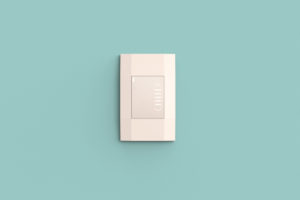
When shopping for switches, you may come across mechanical and capacitive. Switches, of course, are found in countless electronic devices. Consisting of the conductive pathways, they are used to control a circuit. While some switches are mechanical, however, others are capacitive. What’s the difference between mechanical and capacitive switches exactly?
What Is a Mechanical Switch?
A mechanical switch is a type of circuit-controlling component that uses a mechanical method of operation. As previously mentioned, all switches are designed to control a circuit. They can either allow electricity to travel through their respective conductive pathways, or they can disrupt the flow of electricity. In the former scenario, the circuit will be closed. In the latter scenario, the circuit will be open. Mechanical switches simply use a mechanical method of operation that involves moving parts.
What Is a Capacitive Switch?
A capacitive switch is a type of circuit-controlling component that uses a capacitive, touch-based method of operation. Capacitive switches control circuits just like their mechanical counterparts. Rather than using a mechanical method of operation, though, they leverage the same capacitive technology as certain touchscreen devices.
There are capacitive touchscreens devices available. Tablet computers and smartphones, for example, often use capacitive technology. Capacitive switches leverage this same technology to control a circuit. They don’t have moving parts. Instead, capacitive switches have an interface that responds to touch commands.
Differences Between Mechanical and Capacitive Switches
While they are both designed to control a circuit, mechanical and capacitive switches aren’t the same. Mechanical switches have moving parts. The parts are stationary by defualt. When you press or otherwise interact with a mechanical switch, some of its parts will move. Pressing a mechanical switch, for example, may push a top layer into a bottom layer. Assuming both of these layers have conductive pathways, this may close the circuit.
There are no moving parts in capacitive switches. Capacitive switches respond directly to touch commands. They work by generating a uniform electrostatic field, which they constantly measure. Pressing your finger against a touch switch will draw some of its electrostatic charge to your body.
You can find capacitive switches in a variety of materials. Overlays for capacitive switches, for example, are available in plastic, acrylic and glass. Mechanical switches are typically available in fewer materials. The main difference between mechanical and capacitive switches, however, is their method of operation. Mechanical switches work by leveraging moving parts, whereas capacitive switches work by detecting changes in a uniform electrostatic field.
